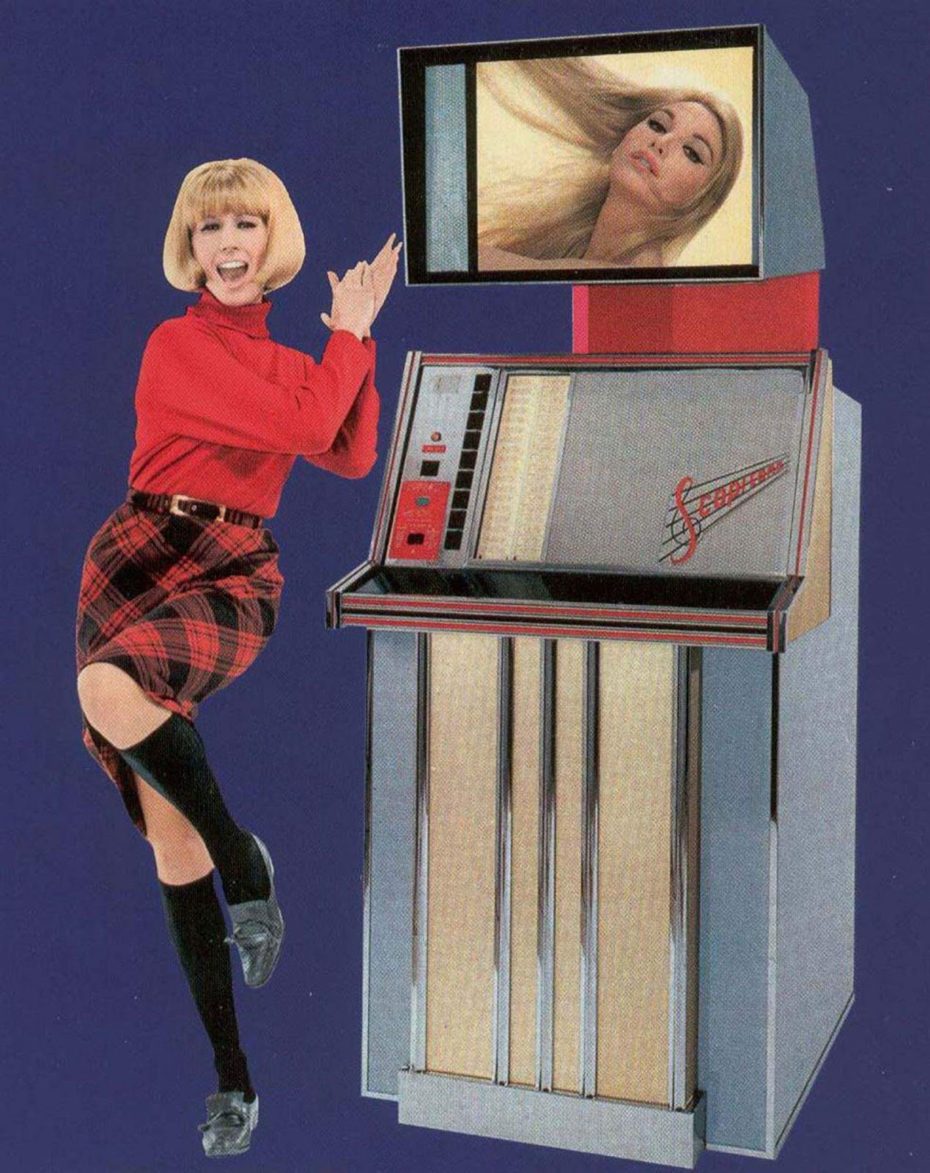
The birth of the music video is often credited to MTV. It was 1981 when the first 24-hour music channel launched on our screens with “Video Killed the Radio Star”. Oh the irony, right? Wrong. Video and the radio star actually go way back. Get comfortable, because we’re about to have some fun getting to know the precursor to MTV– Le Scopitone!
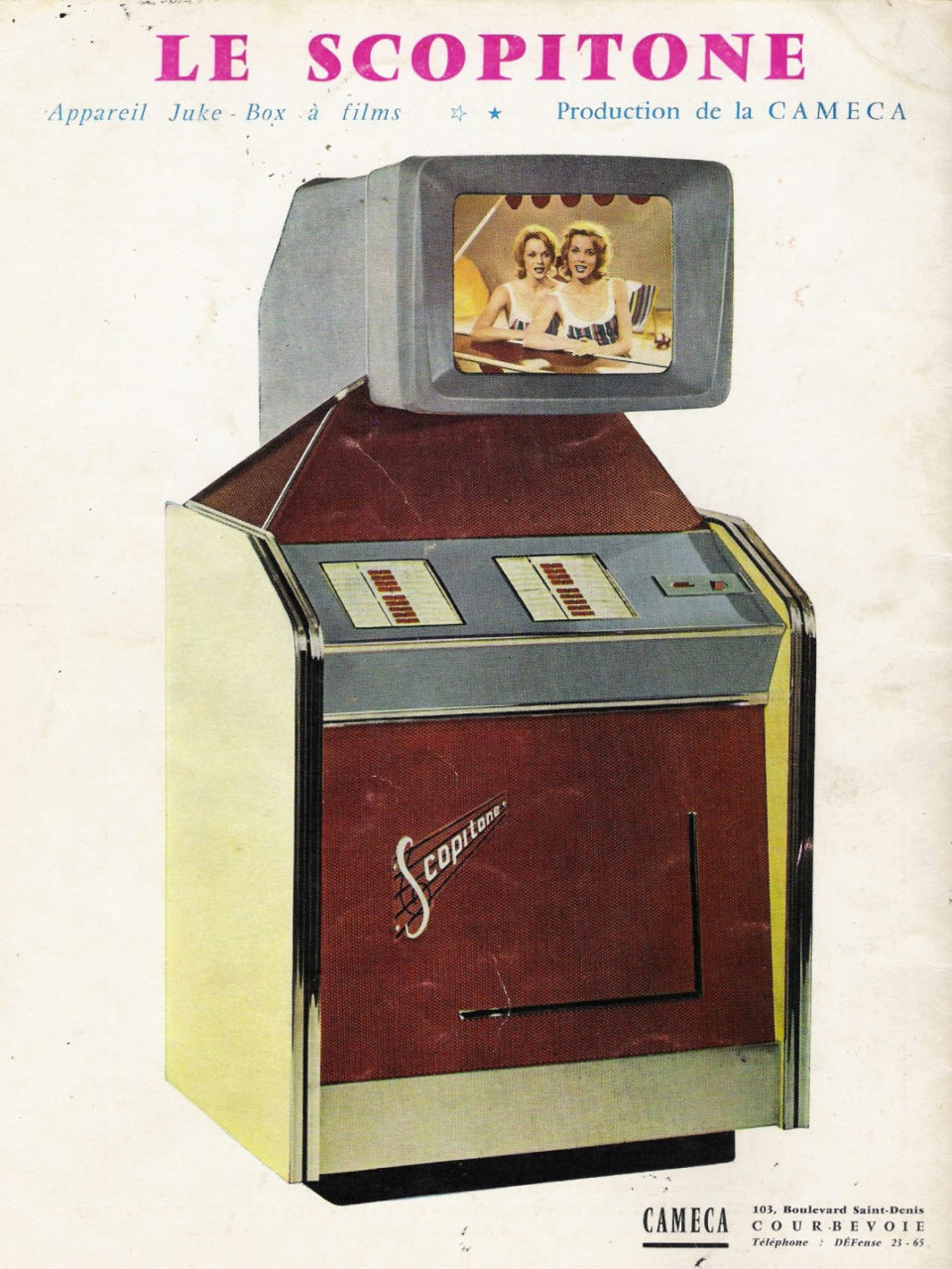
Once upon a time, the jukebox and television came together to make music magic. Serge Gainsbourg, his Yé Yé girls, and Johnny Hallyday were some of the first videos to join the Scopitone revolution. And of course they were the epitome of French chic. Oozing art house aesthetics, the clips were beautifully shot and just plain cool…
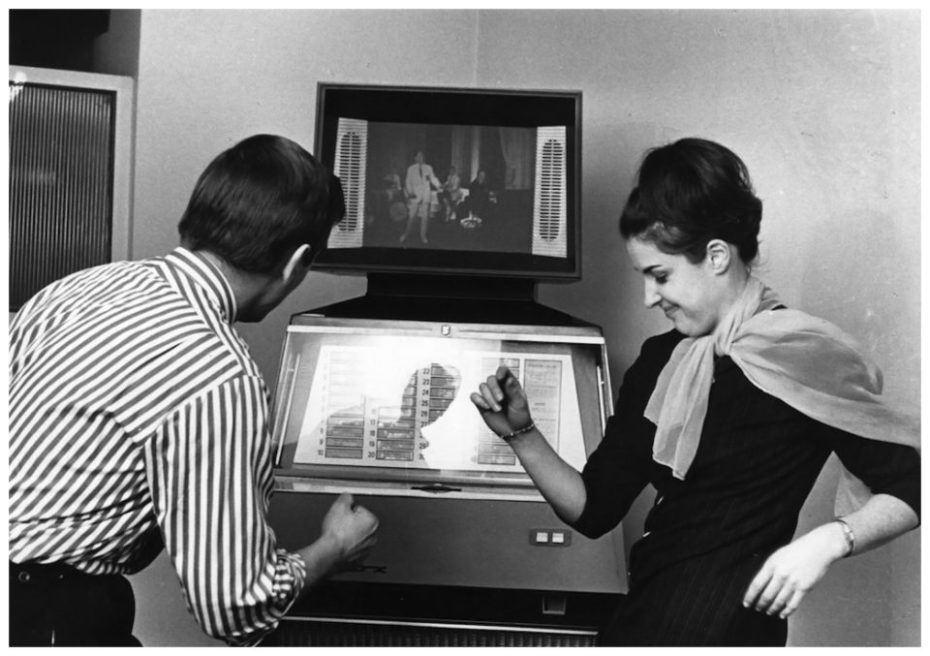
But even the Scopitone has it owns precursor– and we can’t talk about the grandfather of music television without first talking about its forefather: the Soundies of the 1940s…
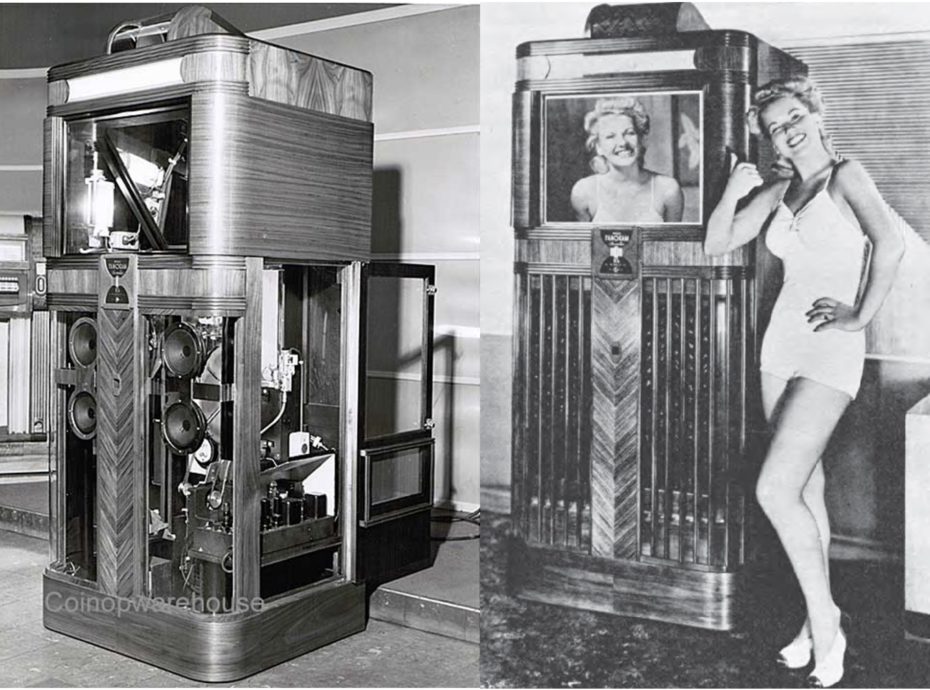
Produced in America between 1941 and 1947, Soundies were shot and recorded live (using several cameras), and the three minute-long black & white musical clips were then released for distribution in bars and restaurants on a coin operated jukebox called Panoram. The new medium was notable for showcasing many black artists who would otherwise not have had the chance to be heard (or seen) during this era of segregation….
Amongst the stars of the Soundies are some familiar names; Louis Armstrong, Dorothy Dandridge, Nat King Cole, Duke Ellington and Count Basie, just to name a few. What’s more, the difference between Soundies and much of the music videos that came after them, is that unlike all modern music videos, the musicians were not lip-syncing to a pre-recorded tracks. This really was, albeit a very short-lived moment, the heyday for the live music video…
In those six years of Soundie success, over 1800 short films were produced. But the chaos of war saw to it that its reign was cut short and by 1947, Soundies were no more. Spot the Soundies hiding in the back of this stereo shop in 1944 below…
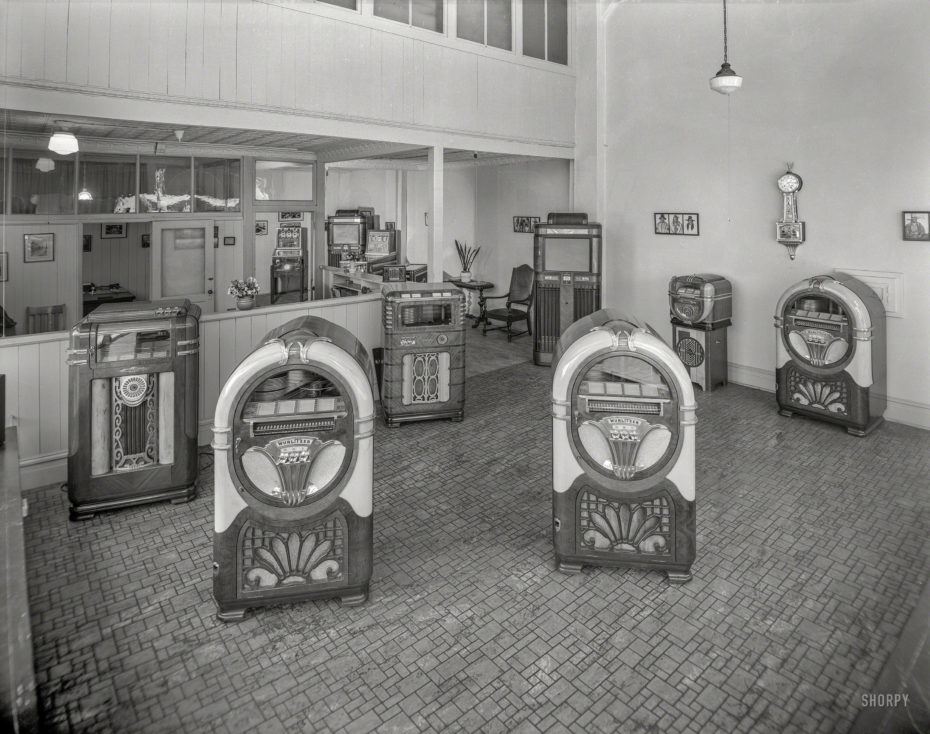
After the war, two French engineers, set to work on creating a new and improved Panoram jukebox. Using spare parts left over from the war, including a 16mm reconnaissance camera from the French Air Force and other bits and bobs, they created their first prototype in 1960. They sold their design to French company CAMCA and gave their refrigerator-sized colossus a name: Scopitone. The machine played three-minute colour films set to music on a 26-inch screen, with a selection of thirty six videos to choose from at a time.
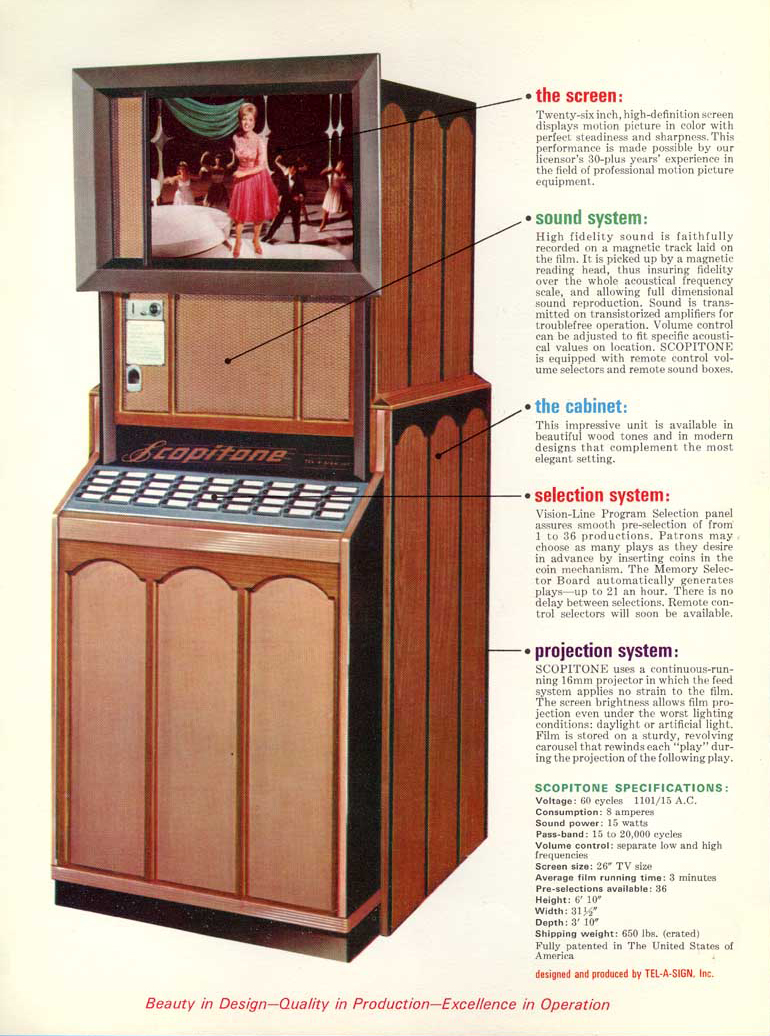
The videos of Scopitone would quickly come to be heavily focused on the female form, but in its early days, the biggest star of the show was hidden behind the scenes. Andrée, or Daidy Davis-Boyer who has been aptly nicknamed Mamie (Grandma) Scopitone, was responsible for some of the very first Scopitone films ever made, and she went on to direct and produce approximately 500 clips over her career.
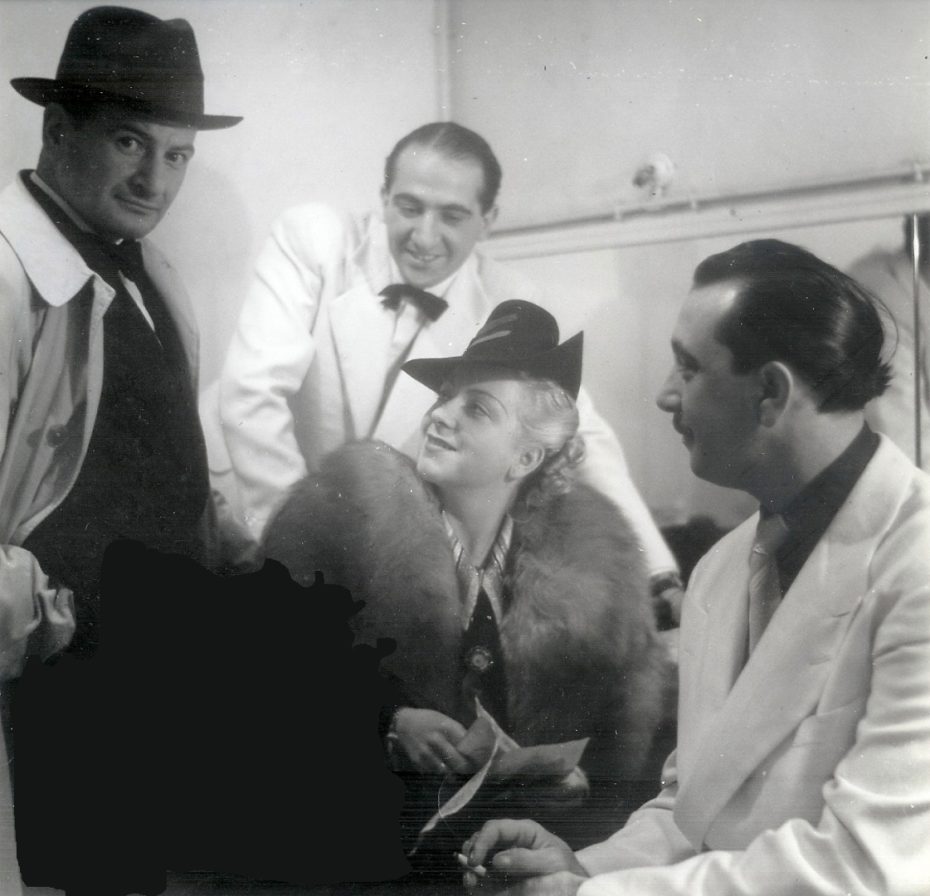
From a young age Andrée (pictured middle) had shown an interest in pop and jazz music. She would invite artists into her home in Antibes and help them with events and promotion. She became the first woman to manage artists in France. During World War II, Daidy was organising shows for the likes of Django Reindhart and Edith Piaf.
Working with (and also scouting) the best talent around, she began to put on many open air concerts and she soon had the idea to start filming her shows. She even recruited the talents of a young Claude Lelouch, while giving emerging artists like Johnny Hallyday and Sylvia Vartan. Like an early Hype Williams of her day, discovering Mamie Scopitone and her forgotten pre-MTV industry can feel a little bit like entering an alternate universe– one that includes the coolest bands you’ve never heard of…
It didn’t take long for consumerist America to catch on. In 1964, CAMCA sold the distributions rights to Chicago based billboard company, Tel-A-Sign. Scopitone had made it to America, attracting the attention of some big industry names including Debbie Reynolds, who invested in the company from the get-go. The wholesome American sweetheart was also the star of the very first American Scopitone in 1966 with ‘If I had a Hammer’. After a market test at a Miami Beach nightclub, Scopitone rose to fame at the Los Angeles Ambassador Hotel. Next, Nancy Sinatra was shimmying with her troupe of go-go girls in a Scopitone-destined video for “These Boots are Made for Walking”. Sure enough, the hemlines got shorter and pretty soon, there wasn’t much clothing in the music videos to speak of at all…
There’s no denying that these video clips were taking full advantage of a brewing sexual revolution– and the fact that they didn’t have to play by the rules of television censorship. The jukeboxes were strategically placed; from nightclubs to factory lounges; and the videos were designed to seduce men into cashing in their coins for the chance of another glimpse at an-up-the skirt shot.
With the popularity of consumer video electronics and the American mentality of ‘bigger is better’, the direction of the films switched from playground flirting to borderline soft-core porn. Much like music videos of today!
Towards the end of the 60’s, the popularity of Scopitone had dwindled and the rise of colour TV quashed the demand for another new and improved version. The last official film made specifically for the Scopitone was in 1978, but there are some real eye-openers to be discovered on the Scopitone youtube channel…
These days, a surviving Scopitone jukebox is incredibly rare and hard to come by. We’ve heard Jack White’s Third Man Records has one loaded with contemporary music videos from his label, and is the only known Scopitone in the world playing modern music. The last listed functioning Scopitone on eBay sold for €4,000.
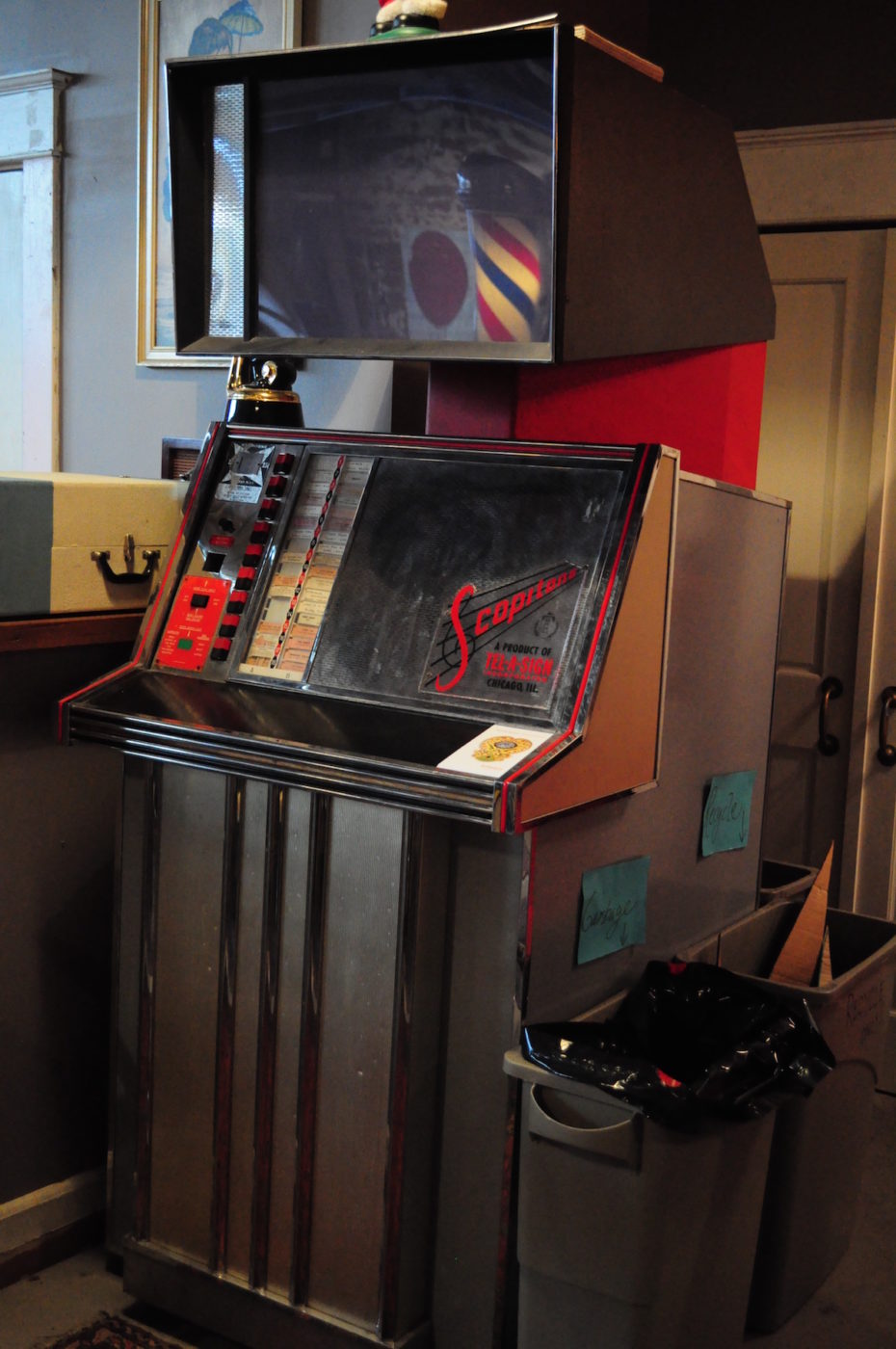
So collector friends and music lovers, if you ever happen to walk into an old bar lost in time and spot one of these gathering dust in the corner– we’d suggest you make an offer on it– tout suite!













